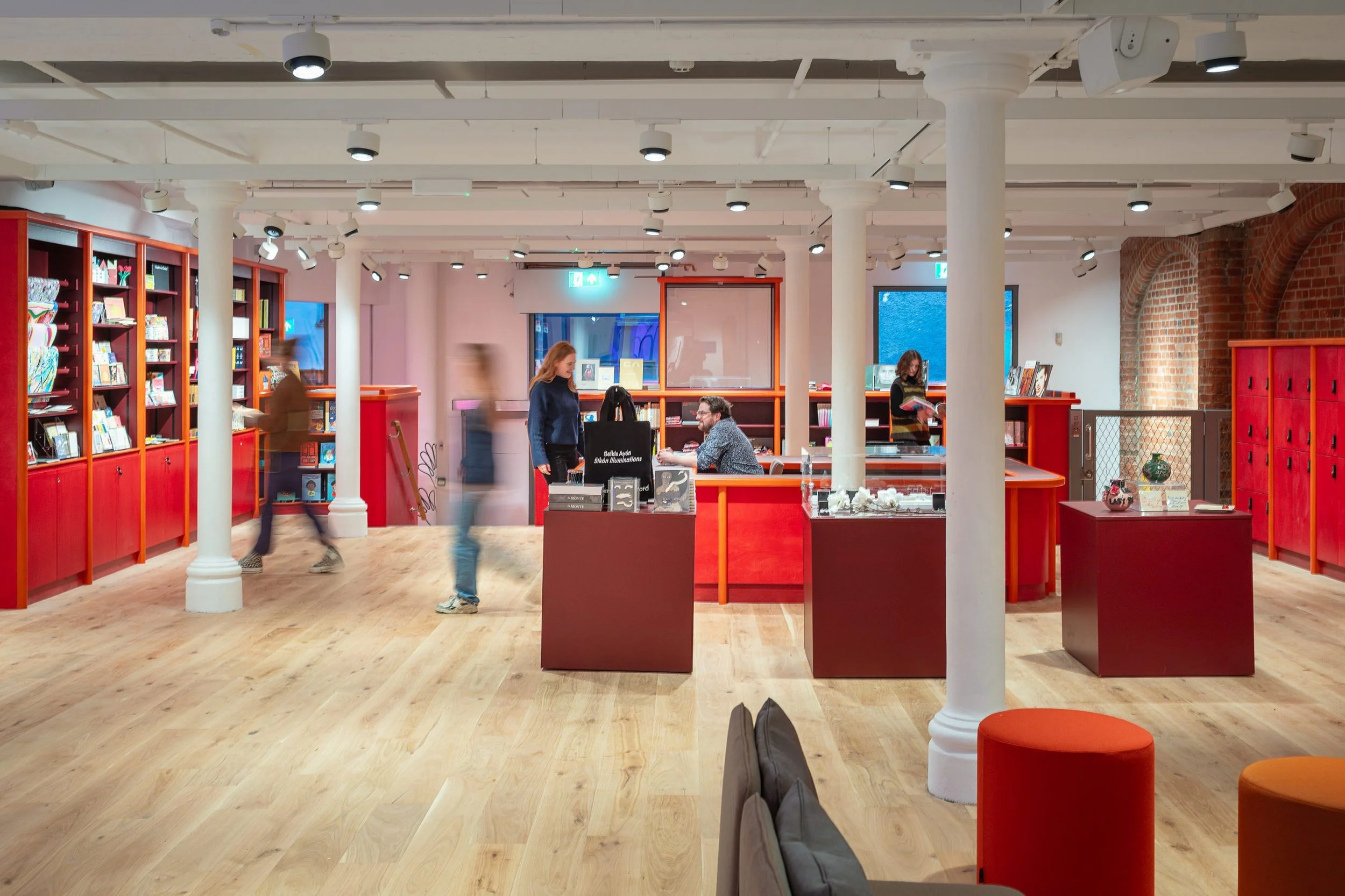Charting the future- a look at Modern Art Oxford
Raphael Roy Taylor
In the wake of the COVID-19 pandemic and the Black Lives Matter movement, public art institutions are reevaluating their roles, focusing on how to make their spaces more accessible and reflective of the diverse communities they serve. This comes at a time of unprecedented financial pressure, threatening their very existence. Modern Art Oxford stands as a striking example of both of these struggles- its stated mission in utilising its spaces to create ‘a more democratic and inclusive society’, faced with the intense challenges of a publicly funded contemporary art space. I had the opportunity to speak with Antonia Blocker, Acting Head of Exhibitions, on these present realities and the future of Modern Art Oxford and the wider UK art scene.
No Medals No Ribbons at Modern Art Oxford, c. Ben Westoby
The gallery’s current strategies for fostering engagement are multifaceted:
● Platforming “predominantly women” artists that might have been “overlooked or forgotten”, who are largely mid to late-career, and ready to “take on the challenge” of working in such a large space. These shows can propel artists to international recognition- Jesse Darling’s striking exhibition, No Medals No Ribbons, led to a nomination for the 2023 Turner Prize, which the artist went on to win. In terms of emerging talent, their new partnership with Somerset House Studios, the South London Gallery and Wysing Arts Centre, the Donna Lynas Residency, supports an artist at a key time in their career, giving them access to significant financial support, mentoring, facilities access and the potential to exhibit over three years. This allows the artist to experiment and discover their practice in an environment of “resilience and sustainability" at a "very, very precarious and frightening moment for the art world".
● A dedicated Communities, Practice and Participation Department, understanding that many communities “don’t necessarily view art galleries as spaces for them”, addressing this with projects to “build bridges and conversations”. For example, the first time children are introduced to Modern Art Oxford would likely be with their parents or carers. In the case of children with incarcerated parents, their opportunity to come into contact with and engage with art is significantly limited. Children Heard and Seen, an organisation supporting children in this terrible situation, has an ongoing relationship with the gallery, in the form of both closed door sessions and public outputs to create a work later on public view, in a powerful example of redressing the inequalities of access to art.
● The refurbishment and remodel of the gallery’s ground floor, with accessibility as the focus, and a new space dedicated to displaying work with the community. The enlarged, more “functional” studio encourages visitors to literally “make a mess”, turning the idea of a gallery as a purely viewing experience on its head.
This strategy feels forward-thinking, aimed at addressing key problems that communities could have with a more traditional contemporary art space. For example, encouraging visitors to work and create visual responses to what they see in the Upper Galleries in addition to a typical feedback survey, you come away far more engaged and interested in the concepts of a particular exhibition. Modern Art Oxford has reimagined itself, from a gallery to a more dynamic experience space, with its Thursday late-night opening and programme of evening live events.
However, its dynamism comes in a uniquely challenging environment. While less than half of the gallery's funding originates from the Arts Council, the remaining portion fundraised from a "wide portfolio" of sources, including trusts, foundations, commercial operations like the shop and café, donations, and patron schemes. Despite this reliance on diverse income streams, similar to many other public galleries, the future of the gallery is dependent on the Arts Council's direction going forward. This is so perilous considering the “unclear” status of the National Portfolio Organisation (NPO) scheme, which supports established institutions by giving them defined grants, enabling them to plan programmes years into the future. It has been extended until 2028, but the possibility of it not being replaced would mark a terrible blow to amazing, public-focused spaces like Modern Art Oxford.
c. Modern Art Oxford
The future of the NPO scheme must be championed, or in three short years, we could be faced with a dramatically different arts scene, with larger-scale institutions pushed to the wayside. If we as a society want to encourage accessibility and engagement in the art world, pulling funding away from galleries that are doing it right seems insane, deeply counterproductive and harmful. If Modern Art Oxford, a space that isn’t solely reliant on the Arts Council financially, is faced with an uncertain future, this must be a warning sign for other spaces supported by the scheme far more dependent on it. It’s deeply worrying for our ability to engage and interact with contemporary art going into the future.


